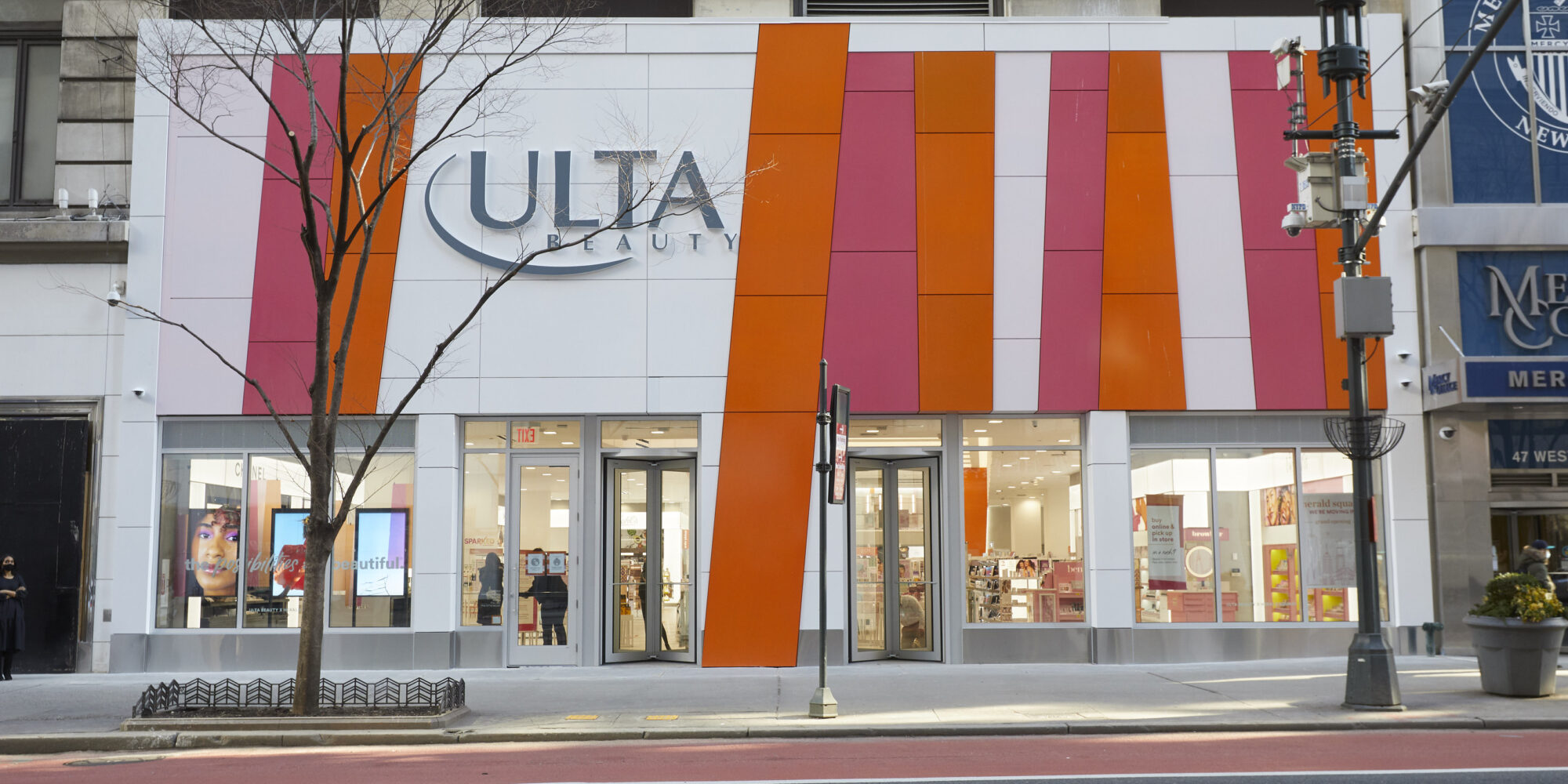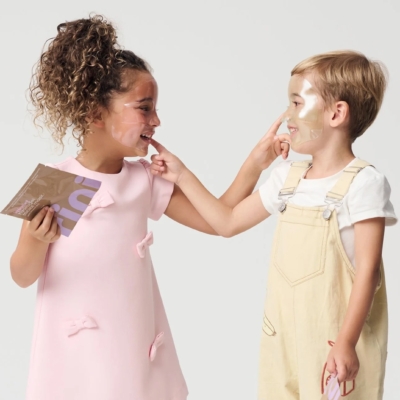
Should Brands Join Ulta Beauty’s New Marketplace—Or Any Other?
Beauty retail’s digital real estate grab is accelerating, with Ulta Beauty the latest to introduce a marketplace as retailers race to extend their merchandise reach without extensive inventory investment.
Over 100 emerging beauty brands are now available to shop on UB Marketplace, the beauty specialty retailer’s new marketplace. The assortment spans wellness, grooming, personal care, luxury, tools and international beauty and includes brands like Manucurist, Apotheke, Blinc, Inked by Dani, Oars + Alps, Babe Original, Ogee, Saturday Skin, Nuxe, Esker Beauty, Sara Happ, Caldera + Lab, Saalt, Manscaped, Wrinkles Schminkles and Byroe.
Ulta’s entry into the marketplace arena comes at a pivotal moment. Sephora is expected to launch its own marketplace soon, while Amazon continues to dominate beauty e-commerce. The multiplication of marketplaces is happening as nearly half of beauty purchases are moving online, according to market research firm NielsenIQ, with Amazon becoming the biggest beauty retailer in the world. Beauty retailers must adapt quickly or be left behind.
But not all marketplaces are created equal. As retailers jockey for digital share, they’re employing vastly different strategies, from Amazon and Walmart’s open, third-party models to invite-only, curated approaches like Ulta’s UB Marketplace. For beauty brands, understanding these distinctions is critical.
According to a statement from Ulta, the retailer plans to scale its marketplace assortment rapidly over the next 12 to 18 months. Muffy Clince, director of category management marketplace at Ulta and its former director of emerging brands, heads the team overseeing UB Marketplace’s brand curation process. UB Marketplace’s broader leadership team includes Lauren Brindley, chief merchandising and digital officer, Josh Friedman, SVP of e-commerce and digital and James Lang, VP of marketplace. The marketplace is fully integrated across the retailer’s website and app to ensure a seamless shopping experience for customers.
Shoppers can earn Ulta Beauty Rewards points on eligible purchases made on the marketplace and return them in store across the retailer’s full fleet of 1,400-plus stores or by mail. Brands handle shipping and pay to list on the platform. Ulta doesn’t hold inventory for marketplace brands.
“UB Marketplace allows us to deliver more newness, faster entry into emerging subcategories and trends, and deeper category authority – while keeping the guest experience unmistakably Ulta Beauty,” said Brindley in a press release.
Ulta’s UB Marketplace is the latest in a string of marketplace launches aimed at gaining share with online customers without the burden of large inventory bets. Over the past six years, Target, Macy’s and Nordstrom have initiated marketplaces on their sites, joining long-time e-commerce powerhouses Amazon and Walmart. Walmart has been steadily adding premium beauty brands to its marketplace to get an edge on Amazon. Multimillion-dollar direct-to-consumer fashion brand Quince launched a beauty marketplace this past summer.
As marketplaces proliferate, we decided to explore how beauty brands should navigate this new landscape. For the latest edition of our ongoing series posing questions related to indie beauty, we asked seven retail consultants, analysts and marketplace agencies the following: How should beauty brands integrate marketplaces into their distribution strategies to achieve maximum impact? What are the risks and opportunities for beauty brands with marketplaces, third-party or otherwise? What is your view on marketplaces: Are they worthy places of investment for beauty brands?
- Madigan Lyden AVP of Brand Strategy, Front Row
Marketplaces can be great opportunities for brands to unlock growth and reach new audiences, but can have unintended consequences if not thought through and executed properly. Brands should consider marketplaces that are right for their brand and not just another revenue stream opportunity.
Particularly if Amazon is a key channel for a brand, they should think through the impact that launching on another marketplace will have on their Amazon business. Third-party marketplaces open up more opportunities for Amazon listings to get suppressed from lower pricing off platform, and the sales impact from this could completely outweigh the opportunity of the marketplace altogether.
It could make sense for a brand to join a marketplace when their brand presence is already established by resellers, but not controlled by the brand itself. Typically this means that the customer is already there, so it’s likely that the marketplace is brand-right, low-hanging fruit for revenue and an opportunity to own brand messaging.
If a marketplace is a good fit for a brand from a demographic and branding perspective, a safe way to launch would be offering channel exclusive SKUs that make sense within that marketplace. The brand should consider offering product variations that are tailored to the customer type that would be shopping there. This would avoid price competition with Amazon and offer something fresh rather than inundating more channels with the same products.
My personal view is that the juice is often not worth the squeeze for new marketplaces, especially if it puts other more established channels at risk. However, when it truly makes sense for the brand, it can be a strong means for new customer exposure.
- Benjamin Lord Founder, Antidote
Brands need to stop treating marketplaces as distribution expansion and start treating them as paid media channels with product fulfillment attached. The unit economics are brutal: 15% to 20% marketplace fees, plus another 8% to 15% in retail media—Amazon Sponsored Products, Walmart Connect, Criteo for Ulta—just to be discoverable. Organic visibility is dead. If you're not budgeting for retail media from day one, you're DOA.
The biggest mistake I see? Brands launching on Ulta’s marketplace without understanding that they can't sample and that not all of them will be able to enroll customers in Ultamate Rewards like omnichannel brands can. You're competing against brands with structural loyalty advantages while paying the same rent. That means your CAC economics need to be 50% better just to break even on LTV. Most brands can't pull that off.
The opportunity is real but narrow: Emerging brands that can't access traditional retail distribution. For them, paying 30% to 35% all-in beats being invisible. They're trading margin for discovery. The risk is everything else. Established brands will burn $50,000 to $150,000 over six to nine months learning they should've invested in profitable DTC instead.
Marketplace customers are channel-loyal, not brand-loyal. Your repeat purchase rates will be 40% to 60% lower than owned channels. And you're anchoring your pricing at promotional levels across every channel you operate.
Here's what separates winners from losers: ruthless performance discipline. I run 90-day profitability tests: launch with your hero SKUs, allocate $10,000 to $15,000 in retail media, track true contribution margin after all fees. If you're not at 15% EBITDA by month three, kill it. The math won't improve. Retail media costs only inflate as more brands flood in.
Marketplaces are worth it only if you're willing to walk away. The moment you need them more than they need you, your margin structure is toast. The Ulta/Sephora marketplace launches will print money for retailers while burning brands who lack the discipline to shut down underperforming channels. Retailers will optimize for their highest-margin products, blame "the algorithm," and collect 30% to 35% in fees either way.
The smartest brands are treating this as a customer acquisition arbitrage play with hard CAC gates, not a growth engine. If your marketplace strategy doesn't include the budget and backbone to run retail media profitably and the courage to exit fast, you're not building a business. You're renting shelf space at venture capital prices.
- Susannah Dellinger Founder and CEO, Bright Beauty Connect
Marketplaces are one of the smartest plays an emerging beauty brand can make right now, especially for founders who don’t have the capital to fill massive retail POs upfront. The dropship model flips the old risk dynamic on its head. Instead of betting big on inventory before you know what sells, you get to test and scale in real time, while still tapping into a major retailer’s traffic and trust.
Ulta’s marketplace, in particular, is a moment worth paying attention to. This is a passion project internally, and they’re going to throw their full weight behind it. The brands that show up early and do it well won’t just see sales, they’ll be remembered for saying yes. Retailers always remember who bets on their big swings.
The real opportunity here isn’t just distribution, it’s also positioning. Marketplaces can sit between DTC and wholesale as a low-risk proving ground for what works as well as testing new offerings. But only if brands approach it with intention: clear pricing, clean storytelling, strong imagery and a strategy to convert that exposure into long-term retail love. When done right, it’s not just another sales channel, it has the potential to be a unique visibility accelerator.
There are downsides for sure, as with most things. Brands absolutely should plan for and consider marketing dollars: targeted ad spend or pay-to-play boosted page placement when available. Marketplaces can also pull focus from their own DTC efforts, just like any distribution. As I always say when considering any retail partner, whether brick-and-mortar or digital: Make sure the spend makes sense on the potential win.
A lesser known niche retailer with a marketplace offering might not make sense for a growing brand where a potential play with Ulta, Amazon or others could very well strike gold. It's about doing the work and research to make sure you are crystal clear on your own margins, ideal customer profiles, where and how they like to shop, and audience size of the potential retail partner.
- Laura Meyer Founder and CEO, Envision Horizons
Marketplaces are evolving fast, and while the opportunities are exciting, brands should resist chasing every new platform. It’s critical to do the homework, understand whether a marketplace truly aligns with your brand, whether you have the right team or partners to manage it and whether your target customer actually shops there.
If you already sell through a retailer’s wholesale channel, joining that same retailer’s marketplace may not make strategic sense, though investing in retail media to grow sales within that retailer likely does. These new marketplaces can, however, serve as powerful proof points. Showing demand that can lead to in-store placement, a dynamic that doesn’t exist with Amazon.
Amazon will remain the dominant player with its 200 million-plus shoppers and unparalleled data ecosystem. Still, brands should closely watch which emerging marketplaces gain traction with their target consumers and evaluate whether the business case is strong enough to justify entry.
My only caution: Don’t join a marketplace unless you’re ready to invest meaningfully, with the right ad budget and team behind it.
- Kelly St. John Founder and CEO, KSJ Collective
The beauty industry is in a constant state of reinvention, and the emergence of new marketplace models from beauty specialty retailers represents a smart and timely evolution. What resonated with consumers five years ago doesn’t necessarily align with today’s expectations around discovery, convenience and choice.
Marketplaces allow retailers to introduce innovation and breadth with less inventory risk along with the flexibility to respond to consumer trends and demands without being constrained by physical space or location, factors that can often extend timelines from brand review to launch by 12 to 24 months. At the same time, marketplaces offer brands an accessible on-ramp to build awareness, credibility and performance data before pursuing traditional wholesale distribution.
From my perspective, marketplaces are not just transactional, they’re experimental. They’ve become modern discovery platforms where retailers can maintain brand integrity through thoughtful curation, while brands can leverage the retailer’s reach, trust, and consumer insights. When executed well, it’s a mutually beneficial model that fuels innovation and growth across the ecosystem.
With Ulta’s marketplace debuting and more retailers rumored to follow, I see this movement as a positive signal of creativity and collaboration within the beauty landscape. This type of experimentation keeps the category dynamic and closely attuned to evolving consumer behavior. Marketplaces won’t replace traditional wholesale or DTC, they’ll complement them, offering brands a lower-risk way to test, learn, and refine before scaling into more permanent retail partnerships.
- Vanessa Kuykendall Chief Engagement Officer, Market Defense
At Market Defense, we believe in marketplaces because customers believe in them. That’s where they’re discovering, comparing and buying. If we want to meet consumers where they are, marketplaces have to be part of the strategy.
One of the biggest advantages of third-party marketplaces is speed. Unlike traditional retail, where brands have to wait for a buyer to validate a trend and then stock it, marketplaces allow brands to respond in real time. If the retailer isn’t moving fast enough, the brand can list the product themselves. That agility is crucial in beauty, where TikTok can drive overnight demand for a product most retailers haven’t even heard of yet.
But more distribution is not always better. The risk with marketplaces, especially when brands start expanding quickly, is losing control of your content. As AI increasingly powers search, product recommendations and review summaries across platforms like Amazon, inaccurate or outdated content can work against you. If your product is listed without your oversight or if it picks up poor reviews that can’t be taken down, that information doesn’t just stay on one marketplace, it gets pulled into AI-powered experiences across the web. That’s why marketplace success depends not just on speed and presence, but on strategy, content governance, and reputation management.
If you don’t have the time or resources to actively manage your marketplace presence or have a partner who can, don’t just throw your catalog online and hope for the best. We manage 80% of the world’s marketplaces for our clients, and we can tell you, it’s complex. You may be better off waiting until you can do it right.
- Neil Saunders Managing Director of Retail, GlobalData
Broadly, beauty brands need to be where shoppers are and that means marketplaces at least need to be considered. If executed well, marketplaces can broaden the distribution of a brand and help to drive metrics like customer acquisition and sales.
That said, there is a balance to be struck because marketplaces can also, potentially, cannibalize sales from other channels. This means lower margins if trade is taken from direct selling or annoying retailers if trade is taken from wholesale accounts. Neither is desirable, so brands need to carefully consider the impact of a marketplace and ensure that it drives incremental value.
For premium brands, partnering with the wrong marketplace can reduce exclusivity and weaken the experience around a brand, so there needs to be some brand or proposition alignment for success.
There is no right or wrong answer on marketplaces. It really depends on how it fits into the overarching strategy of a brand.
If you have a question you want Beauty Independent to ask retail consultants, analysts and marketplace agencies, send it to editor@beautyindependent.com.
This article was revised on October 14 to include Muffy Clince's correct title position and UB Marketplace's executive leadership team.






Leave a Reply
You must be logged in to post a comment.